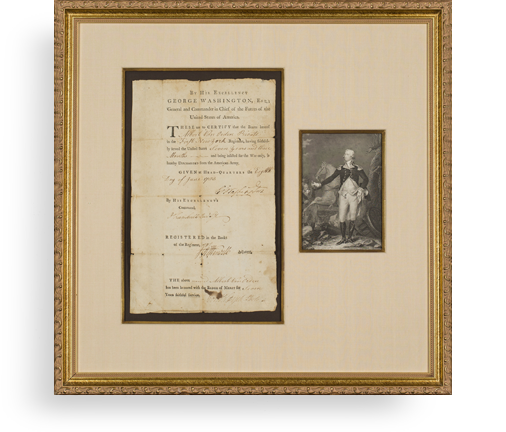Sold – Roosevelt Calls the First White House Conference on Children

Addressed to the man who would be Secretary of the Conference.
For progressives in the 1890’s and the first decades of the 20th century, children and reform were practically synonymous. In the national effort to enact reform measures, reformers used photographs of children crowded into tenements and pictures of boys and girls in factories dwarfed by the machines they were working. Concern...
For progressives in the 1890’s and the first decades of the 20th century, children and reform were practically synonymous. In the national effort to enact reform measures, reformers used photographs of children crowded into tenements and pictures of boys and girls in factories dwarfed by the machines they were working. Concern for children was at the forefront of the struggle for better housing, welfare and sanitation, and against child labor. Adding to this problem was the large number of abandoned children, latch-key children whose parents were working up to 18 hours a day, and delinquents who were growing up alone on the mean streets of cities. Many organizations opened to promote the welfare of children, and about twenty private institutions per year were established for wayward children. However, private measures were unorganized and inadequate, and the existing philosophy was that children with problems should be institutionalized. The U.S. government had played no role in tackling these problems, and there were many people who thought it should continue that way.
In 1903, two early social reformers, Lillian Wald, of New York's Henry Street Settlement House, and Florence Kelly, of the National Consumer's League, launched a national campaign for establishment of a federal Children's Bureau to provide a national focus for child welfare reform and develop public child welfare policy. President Roosevelt was a progressive who positively opposed institutionalizing healthy, neglected children, and, saying the idea was “Bully,” he signed on in support of the effort. On Christmas Day 1908, he sent a letter, calling the first ever White House Conference on the Care of Dependent Children.
Printed Letter Signed on embossed White House letterhead, Washington, December 25, 1909, inviting James E. West, secretary of the National Child-Rescue League, to attend the conference. “Surely nothing ought to interest our people more than the care of the children who are destitute and neglected but not delinquent. Personally, I very earnestly believe that the best way in which to care for dependent children is in the family home. In Massachusetts many orphan asylums have been discontinued and thousands of the children who formerly have gone to the orphan asylums are now kept in private homes, either on board, with payment from public or private treasuries, or in adopted homes provided by the generosity of foster parents…I am accordingly inviting a number of men and women…to a conference to be held in Washington…The conference will open by my receiving the members at the White House…Can you attend?” The text of the letter was released to the press the day before it was mailed to the invitees, so that it was published in the nation’s newspapers on Christmas Day. It is the only copy we have ever seen. Few if any others seem to have survived.
West was not just any invitee; he was Secretary of the Conference, and TR was familiar with West, having appointed him to the Board of Pension Appeals in the Department of the Interior in 1902. West was later instrumental in establishing the juvenile court system. As secretary of the National Child Rescue League, he was responsible for placing orphaned children into homes. He ended up as the first professional Chief Scout Executive of the Boy Scouts of America.
The White House Conference met in Washington on January 25, 1909, and suggested establishing the bureau envisioned by Wald and Kelly. It also resulted in development of the widow's pension movement, the growth of adoption agencies, the establishment of boarding-out care for children who were not adopted, and the formation of the cottage plan (which called for dealing with children as individuals and replaced congregate programs). The Children's Bureau was formally created in 1912 when President Taft signed into law a bill creating the new federal government organization. The stated purpose of the new Bureau was to investigate and report "upon all matters pertaining to the welfare of children and child life among all classes of our people."
There have been seven such conferences over the decades, and legislation to convene a White House Conference on Children and Youth in 2010 seems headed for adoption in Congress.

Frame, Display, Preserve
Each frame is custom constructed, using only proper museum archival materials. This includes:The finest frames, tailored to match the document you have chosen. These can period style, antiqued, gilded, wood, etc. Fabric mats, including silk and satin, as well as museum mat board with hand painted bevels. Attachment of the document to the matting to ensure its protection. This "hinging" is done according to archival standards. Protective "glass," or Tru Vue Optium Acrylic glazing, which is shatter resistant, 99% UV protective, and anti-reflective. You benefit from our decades of experience in designing and creating beautiful, compelling, and protective framed historical documents.
Learn more about our Framing Services







































































































